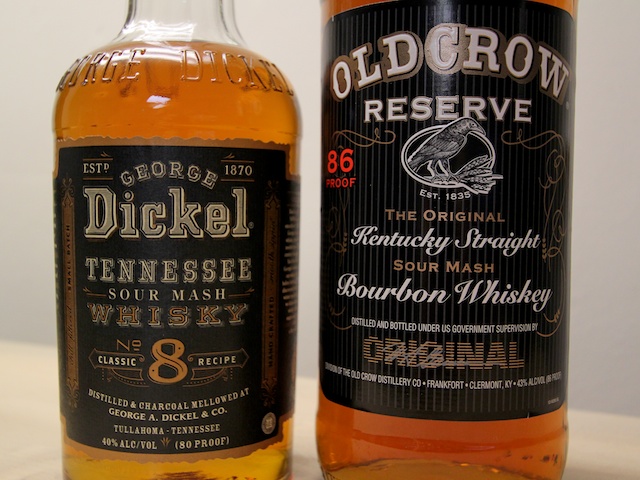Big Brand Potential

One thing I mentioned yesterday on the blog was that big brands have both the potential for overpriced, profit-oriented crap and high-quality, superbly-crafted products that could only exist in a large volume matrix. That might mean a delicious blend composed of selections from a vast library of stock. It might also mean the capability to produce inexpensive, value-priced booze on a gigantic scale, further bringing down the cost of production and therefore the cost of the bottle for customers. One of the problems that "craft" producers have is their ultimate sticker price. Sure, you made your own whiskey by hand, macerating the grains by chewing them yourself, spitting them into a hand-crafted clay pot, using only your own saliva and the free-roaming yeast in the air to begin fermentation, before distilling it on an antique still thought to have been used by the early Mayans. But it's $100 a bottle! Do all those detailed production methods justify the final cost?
This is where big brands have the edge. While I know that many consumers have become used to rising prices on the Bourbon shelf, there are still values. And then there are the super values - whiskies so inexpensive that customers just assume they can't be any good. We carry two such whiskies at K&L: the George Dickel #8 Tennessee Whiskey made by Diageo and the Old Crow Reserve Kentucky Straight Bourbon made by Jim Beam. Diageo and Beam are two of the biggest corporations in the liquor game. They are gigantic, global operations with a finger in almost every booze pie available. It's because of their immense size that they can afford to sell George Dickel #8 for $14.99 a bottle and Old Crow Reserve (in liters!) for $13.99. Sure, they're dirt cheap. But that's because they're not good whiskies, right? Wrong.
Again, "good" whiskey depends not only on your taste, but your expectation (mostly the latter, in my opinion). If you're expecting the Old Crow to taste like 18 year old Stitzel-Weller, it doesn't. However, if you expect that it tastes like Draino mixed with rat poison and an old man's armpit, it doesn't taste like that either. Old Crow Reserve smells like Bourbon, with that classic Beam woody aroma. It tastes like Bourbon with a rich woody burst of sweetness right off the bat (it does finish a little thinly, however). And it mixes like Bourbon (try making a Manhattan with Old Crow and Carpano Antica. You'll be kicking yourself for wasting that High West Rendezvous you could have been sipping this whole time).
Dickel #8 is its own animal entirely and has a pretty devout following all over the country. There's a sweet and mellow corn aroma on the nose, a light oak flavor on the entry, and a long, soft kiss of vanilla on the back end. In my opinion, Dickel was made to drink on the rocks or with soda water. Even in today's age of boutique whiskey, it's still a ridiculous deal - especially when compared to some of craft whiskey options on the market. It's this type of product that can never be created on a smaller scale. It's this type of product that makes a player like Diageo a vital part of our whiskey community. While we may pull our hair out over their management of smaller single malt distilleries, we can't complain when they give us George Dickel #8 at $14.99 a bottle. That's the trade off.
While I know I don't need to convince anyone about Dickel (because I'm only preaching to the choir with many readers), I do think there will be some skepticism with the Old Crow. That's why I'm willing to put my money where my mouth is. I'll eat Crow so you can drink it (at least for the first 20 people to click on the link).
Give it a try. I think you'll be quite impressed for what you paid.
Old Crow Reserve Bourbon 1L $0.99 (SOLD OUT NOW) - Four year old Jim Beam in a liter bottle. You can't lose. For those who like the grainy component in the forefront, this is the value-priced mixer you've been dreaming of.
-David Driscoll
